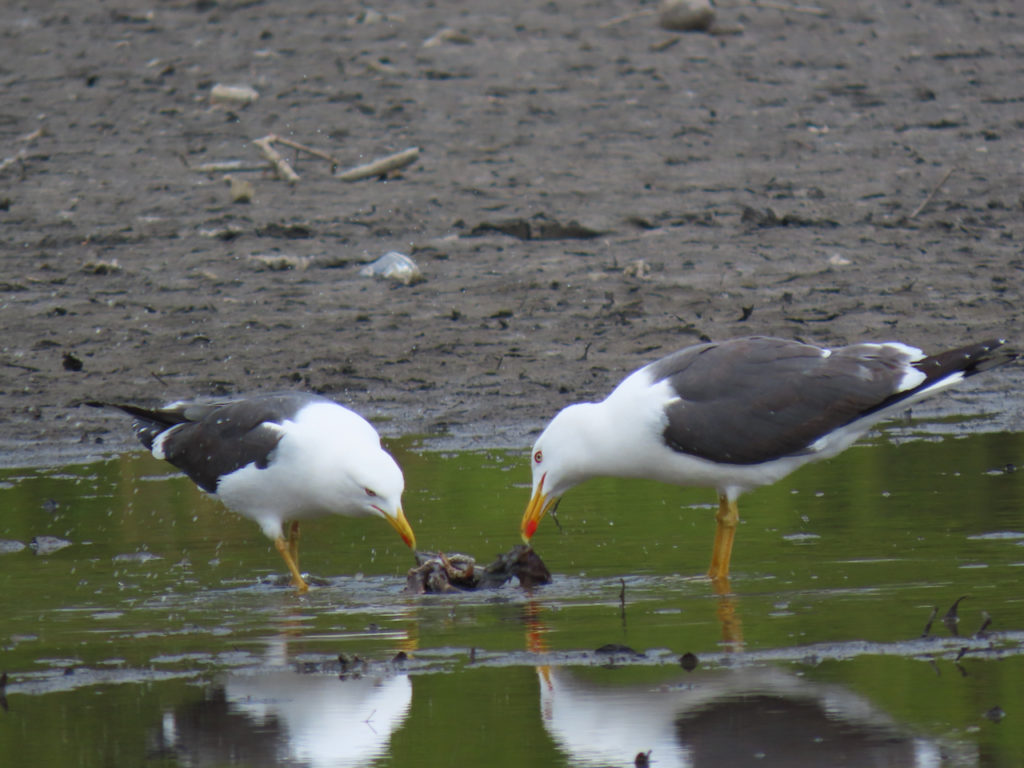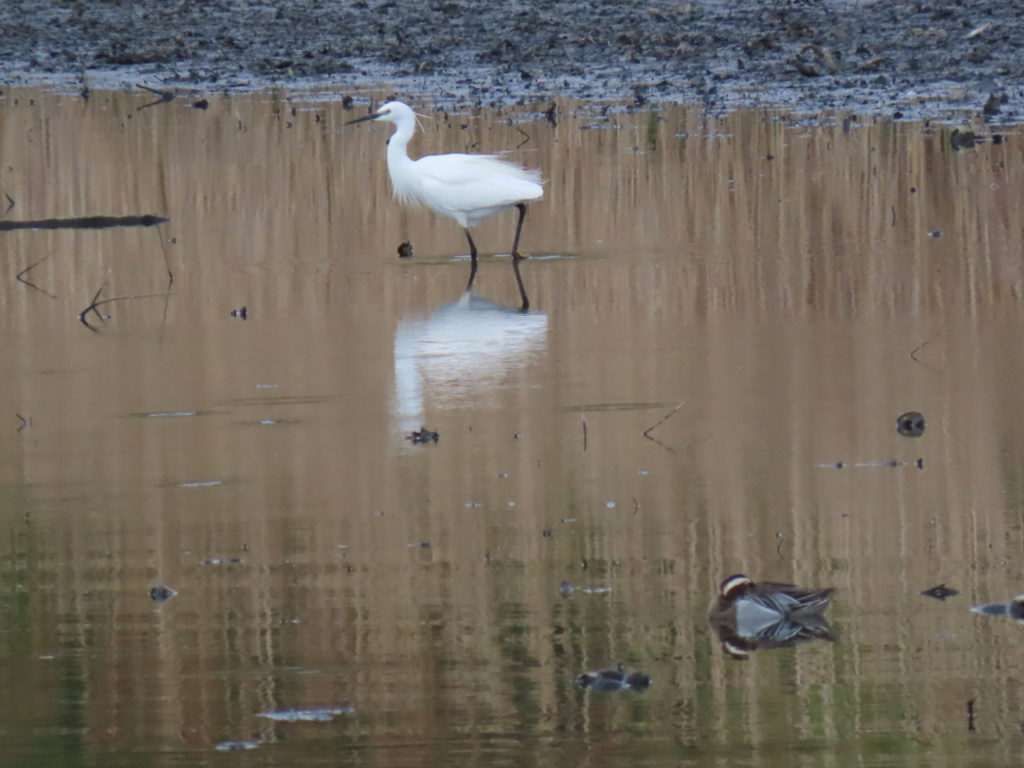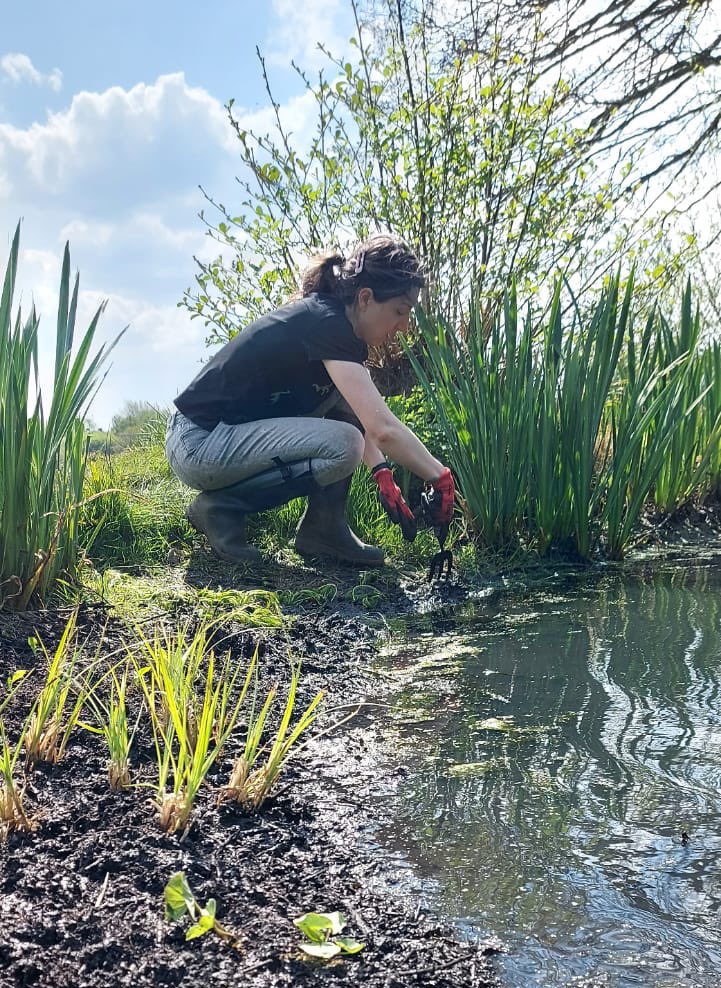Thinking big and acting small keeps things moving at Brent Reservoir, writes Ben Watt, as flowering rush, water plantain and greater spearwort are reintroduced.

April. I’ve been spending time in Somerset lately, and can’t help but compare the pristine conditions of nature reserves on the Avalon Marshes with those at Brent Reservoir (Welsh Harp).
The reed beds conceal bittern and water rail, not traffic cones and crisp packets. Pike loom in the shallows below the hides, where the footings stand in sharp clear water. At the Welsh Harp, decades of inflowing urban sediment, black with runoff, has massed in the eastern and northern shallows, which means the main hides are now set back in a wide ring of plastic-flecked reed and self-seeded willow that needs to be trampled down each year to afford a view of the birds. The long process of digging much of it out will restore a better balance of water to land in the protected habitats, and is high on the wishlist for further restoration works after the current breeding season.
The scrapes and islands of Somerset glimmer with shingle in the spring sunlight, hosting ruff, flocks of black-tailed godwit and lapwing, and last week a strutting glossy ibis in full goth black-bronze plumage. In contrast, Brent Reservoir’s scrapes — created in the nineties with help from the Environment Agency (remember that) — are overgrown with bramble and invasives. The mudflats are largely contaminated silt reefs, where every time it rains more wet wipes and carrier bags rise to the surface. Gulls stab at bin liners. Teal doggedly upend into the ankle-deep water in seach of food among the god-knows-what. It’s a wonder any of them keep coming back.

In recents months our campaign has focussed on the upbeat stuff that we’ve helped inspire, not the downbeat stuff we launched with in early 2021. I’m talking about the first serious restoration works in decades, the new funding streams, landowners and referees waking up, an actual future — but some days I look out and still see such a mountain to climb.
I couldn’t help but think what the Welsh Harp did to deserve this. Right up until the 1990s — at which point the reservoir was already 150 years old and still a beautiful, shallow flooded valley with natural margins of marshland, fen and willow carr, only six miles from Trafalgar Square — it had withstood the slow encirclement of urban sprawl and casual rising pollution, and its wildlife and uncommon flora had continued to thrive; but then the stewardship atrophied and the external pressure increased. Roads got busier, rivers got dirtier, local services got thinner, and government money got scarcer. The story feels like a microcosm of what the whole environmental movement is facing, particularly in cities — one in which we seem to want nature rich in biodiversity, green spaces for mental wellbeing, animals and plants to just BE there, but we haven’t worked out at what cost. How much are we prepared to do — maybe even give up — to really make it work?
I then heard about a new initiative by Leila, co-leader of Friends of the Welsh Harp (and one of our Cool Oak pressure group). Inspired by the sixteen rare plant species listed in the original 1950 SSSI citation for Brent Reservoir — many of which are long since gone — she asked with disarming enthusiasm how difficult could it be to reintroduce some of them. Badgering council officials and local ecologists, she got approval for the replanting of several species, sourced National Park City funding and a supplier, engaged an expert to recommend site locations, and on April 24 began, with the help of local volunteers, a programme of reintroduction. Flowering rush, water plantain, greater spearwort and a host of others will appear again at Brent Reservoir. It was such a simple idea, yet an inspiring one that makes the whole campaign inch forward again.

A couple of days later, I attended the Barnet Environmental Hustings for the May local elections and submitted a question on the Welsh Harp that was included in the debate. In response, Labour vowed if elected to employ a full-time biodiversity officer and declare an immediate climate emergency. Both of these — we have lobbied for the biodiversity officer since last April — are crucial to the eco-future of Brent Reservoir. The Conservatives, who currently lead the council, offer neither.
Think big, act small, I thought. Keep it local. Keep it moving.
A man approached me on Cool Oak bridge recently. Young. Beard. ‘You involved in all this?’ he asked. ‘Yes’, I said. ‘Great work. Keep it going. What are those mad black herons I saw?’ ’They are cormorants’. He nodded appreciatively before adding: ‘Scary, man. They’ve got an atmosphere’.
The whole place has. Who needs a glossy ibis.
*
Ben Watt is a musician and writer, best known as one half of Everything But The Girl. His memoir ‘Romany and Tom’, about his parents, was nominated for the Samuel Johnson (Baillie Gifford) Prize. He runs Buzzin’ Fly Records, and in 2021 founded environmental pressure group Cool Oak.